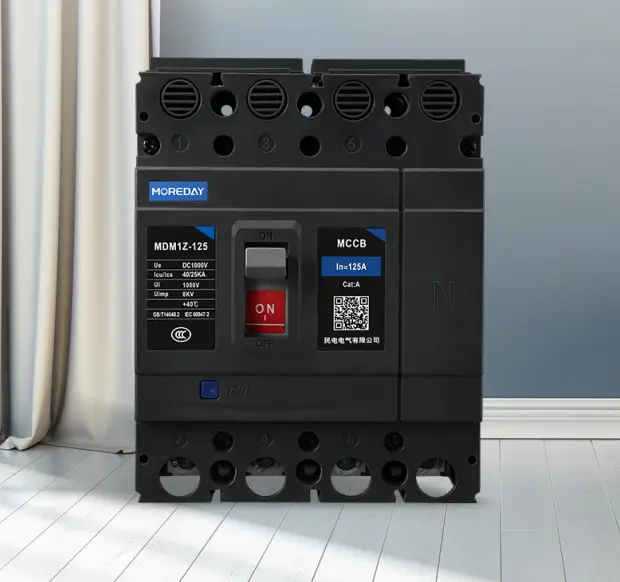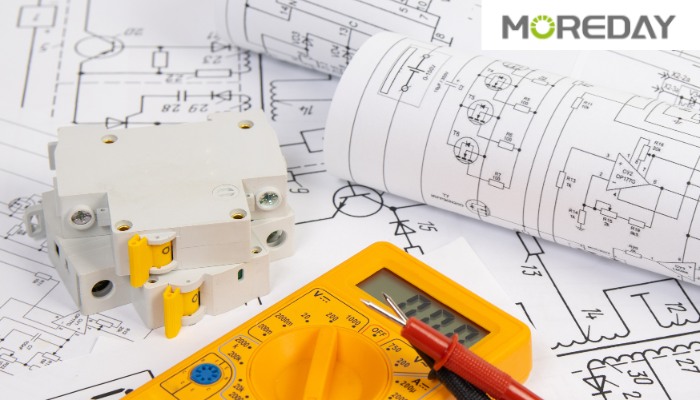In-home and industrial environments, circuit breakers are important protection devices for circuits, and their function is directly related to electrical safety. Using a multimeter to test the integrity of a circuit breaker is a quick and effective way to help you confirm that the circuit breaker is working properly and avoids potential electrical failures.
This article will introduce how to use a multimeter to perform detailed circuit breaker testing to ensure that your electrical system is operating safely and reliably. This is not only a technical operation, but also a basic safety measure that every home and facility manager should master.
What is a Circuit Breaker?

Circuit breakers can be divided into DC circuit breakers and AC circuit breakers. They are mainly used to automatically cut off the circuit to protect the electrical system from damage caused by overload, short circuits, and other faults.
It can quickly disconnect the circuit when the current is abnormal, thereby preventing electrical equipment and wires from overheating, fire, and other safety hazards. The circuit breaker has an automatic recovery function, which can restore the normal operation of the circuit once the fault is eliminated.
Understanding Multimeter
A multimeter is a multifunctional instrument used to measure electrical characteristics such as voltage, current, and resistance. It is an indispensable tool for electricians and anyone who does electrical work. For testing circuit breakers, the continuity and resistance functions of the multimeter are particularly useful.
Testing Circuit Breakers with a Multimeter: Step-by-Step

Before testing a circuit breaker, you should prepare your tools and read the safety instructions.
Tools needed:
- Digital Multimeter
- Insulated screwdriver
- Safety gloves
- Goggles
Safety instructions:
- Turn off the power: Always turn off the main power before working on the circuit to avoid electric shock.
- Wear safety gear: Use insulated gloves and safety goggles to protect yourself from accidental electric shock and debris.
- Verify that the power is off: Use a non-contact voltage tester to double-check that the power is off.
With these tools prepared and the power turned off, you can follow the steps below to test the circuit breaker with a multimeter.
Step 1: Access the Circuit Breaker
Locate the electrical panel where the circuit breaker is installed. Open the panel door and locate the circuit breaker to be tested.
Step 2: Turn Off the Circuit Breaker
Before performing any tests, make sure the circuit breaker is in the “off” position. This step is very important for accurate testing and safety.
Step 3: Remove the Circuit Breaker
Using an insulated screwdriver, carefully remove the circuit breaker from the panel. Make sure not to touch any exposed wires or terminals.
Step 4: Set Up the Multimeter
Set the multimeter to the continuity or ohms (Ω) setting. This setting allows you to test whether the circuit breaker allows current to flow.
Step 5: Test for Continuity
Touch the red and black probes of the multimeter to the load and line terminals of the circuit breaker, respectively, and check if the multimeter reads close to zero ohms (continuity) or displays “OL” (no continuity).
Step 6: Test for Resistance
To further verify the condition of the circuit breaker, switch the multimeter to the resistance setting (ohms). Place the probes on the same terminals as before to measure the resistance.
Typically, a good circuit breaker will show low resistance, usually less than 1 ohm; high resistance or infinite readings indicate that the circuit breaker is defective and needs to be replaced.
Step 7: Reinstall the Circuit Breaker
If the circuit breaker passes both tests, carefully reinstall it into the panel and secure it with screws. If it fails, replace it with a new one.
Step 8: Turn on the Power
Once everything is ready, turn the circuit breaker back to the “on” position and restore the main power. Check that the electrical system is operating normally.
According to the detailed steps above, you can easily complete the test of the circuit breaker independently. If other problems occur during the test, it is recommended to observe some common fault problems or ask for expert advice. You can also buy a new circuit breaker on the MOREDAY website for replacement.
Common Troubleshooting Problems

No Continuity or High Resistance
If the multimeter shows no continuity or high resistance, the circuit breaker may be faulty. Replacing the circuit breaker is the best course of action.
Unstable Readings
Unstable readings may be caused by poor connections. Make sure the multimeter probes are securely connected to the terminals and that no corrosion or dirt obstructs the connection.
Multimeter Problems
If you suspect the multimeter is not working properly, test it on a well-known circuit or battery to ensure it is providing accurate readings.
How to Extend the Life of a Breaker?
Proper installation, regular maintenance, and timely troubleshooting can effectively extend the life of the breakers. You can refer to the following points to properly maintain it.
Proper Installation: Strictly follow the manufacturer’s instructions for proper installation to avoid early failures caused by improper installation.
Regular Inspection: Perform regular visual inspections of the circuit breakers to look for any visible signs of damage or wear.
Cleaning and Maintenance: Keep the circuit breakers and their surroundings clean to prevent dust accumulation that may cause failures.
Test Function: Regularly test the function of circuit breakers using professional tools to ensure that they can disconnect properly when needed.
Avoid overloads: Make sure the circuit is not overloaded for long periods, which can damage the circuit breaker.
Regular inspections and cleanings can maximize the life of the circuit breaker and ensure the safety of the electrical system.
Conclusion
Testing the integrity of circuit breakers is a skill that every homeowner or facility manager should have to ensure electrical safety and prevent possible equipment damage or worse. In this article, you have learned how to use a multimeter to test circuit breakers, a simple and effective technique.
Remember, regular inspection and maintenance of your electrical system is the best strategy to protect your home and facility from the threat of electrical faults. If you have any questions or difficulties during the operation, it is best to seek or contact a professional electrician for help.
Related reading: What is a circuit breaker used for

